Climbing Mount Kilimanjaro is a challenging trek and tops the bucket list of many adventure travelers. While I can tell you from experience there is nothing easy about this trek, there are some things you can do before you sign-in at the National Park that will help you in your quest for the summit. Here are 7 tips for Kilimanjaro that will help you reach the Roof of Africa.
Tips for Kilimanjaro
Tips for Kilimanjaro: Choose the right route
When choosing a route to trek to the top of Mount Kilimanjaro it’s not about how fast you can make it there. The longer you give your body to adjust to the altitude and lack of oxygen the more successful you’re likely to be.
In total, there are 7 routes up to the summit of Kili. Some of them summit in a very short period of time. That can be unsafe and seriously limit your likelihood of reaching Uhuru Peak. I realize that climbing Mount Kilimanjaro can be expensive and fewer days means less money. When it comes to hiking at altitude, or any kind of adventure really, I would rather spend more time and money in order to have a higher chance of being successful.
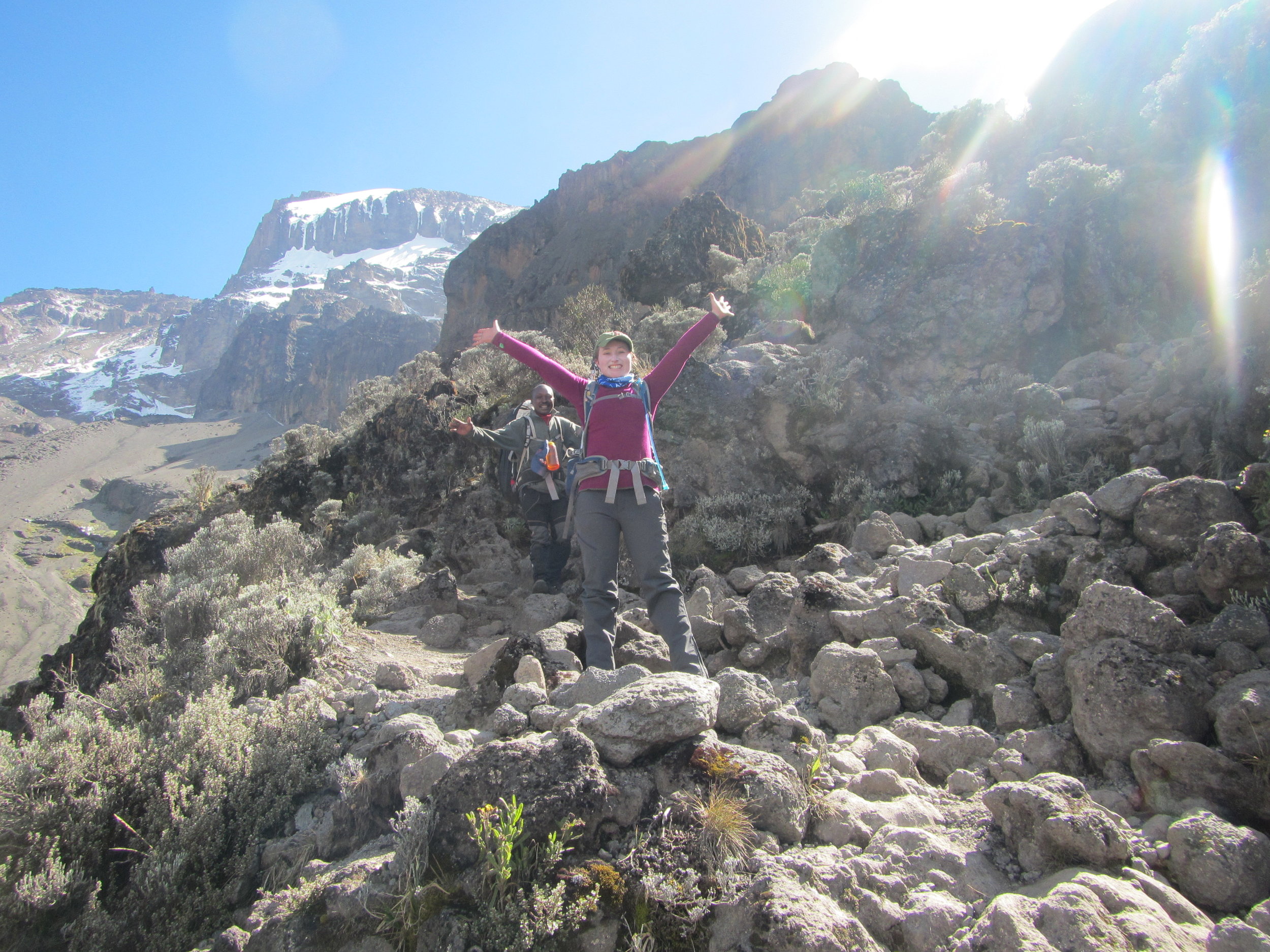
Talk to a local outfitter about the different options you have. They know the mountain better than anyone, and just because you’re best friend went up one route and reached the summit doesn’t mean that route is the best option.
Pin it for Later
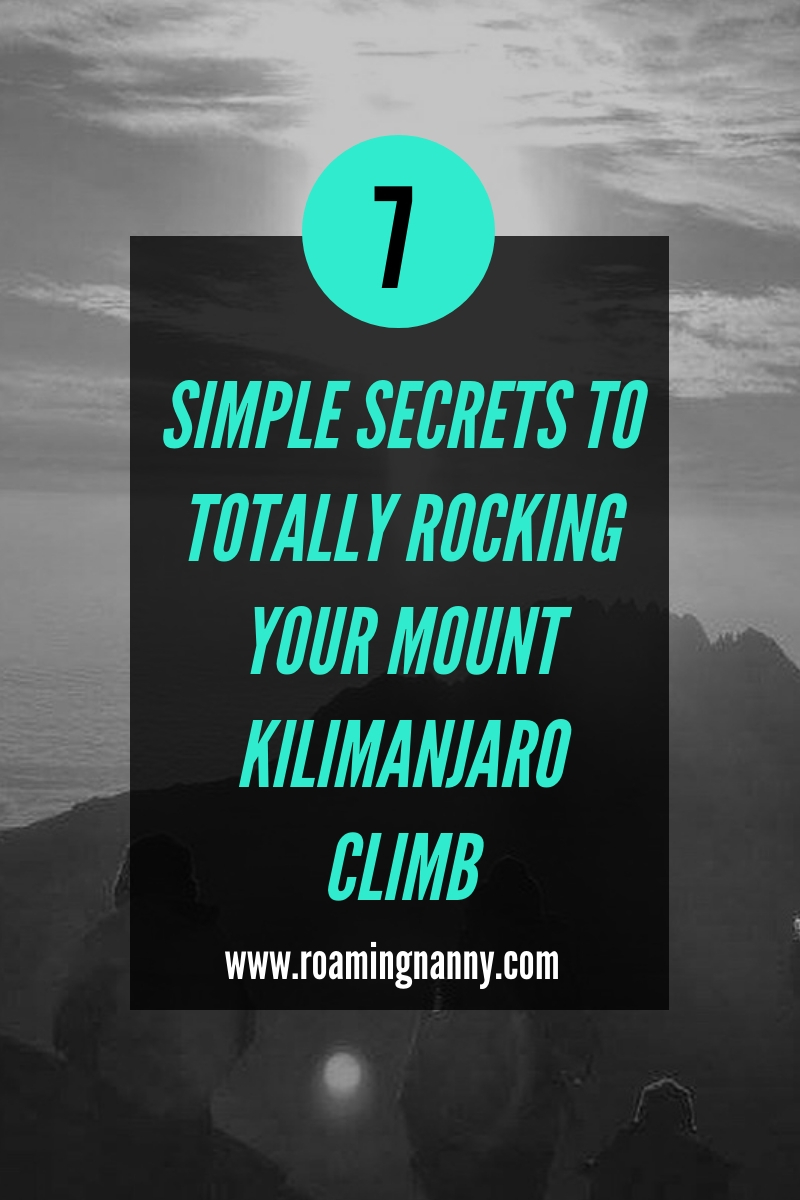
Tip #2 for rocking Mount Kilimanjaro: Get the right gear
I’m not going to go step by step of everything you need to bring with you on the mountain – you can find a detailed post about packing for Mount Kilimanjaro here – but I’m going to highlight the 4 most important things I think you need on the mountain.
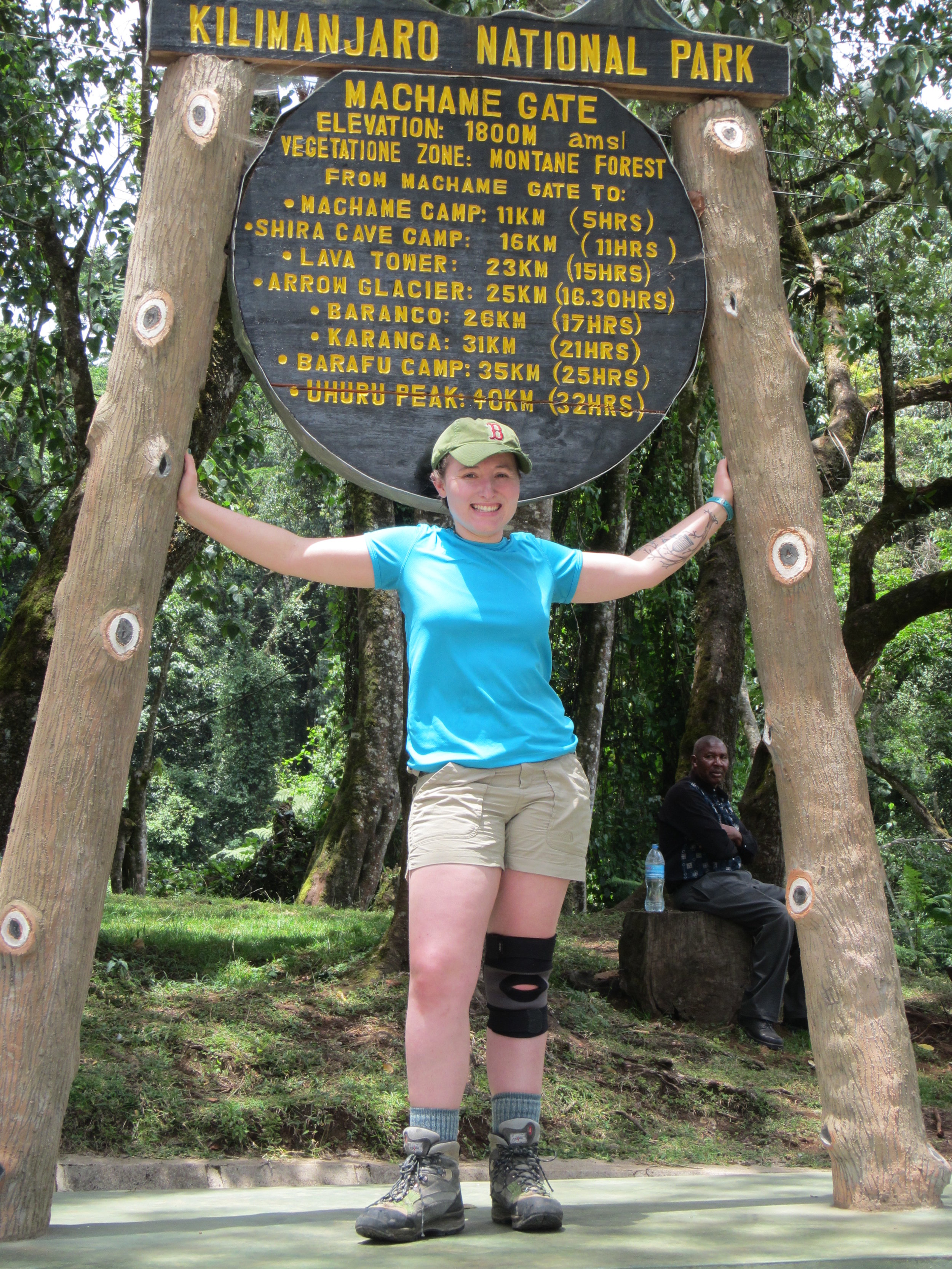
The first is a great pair of hiking boots. You’ll be on your feet for most of the journey up to the summit. Buying a cheaper pair of hiking boots is not the way to go here. Go to your local outdoor gear store and try on as many boots as you need to. Then, break them in before you go. Wear them to work, around the house, hiking, doing yard work, basically whenever you can. I love my Vasque Erikkson hiking boots.
Your trekking poles will be your best friend on this trip. I had never used them before I did Mount Kilimanjaro and now I don’t go on a hike without them. Trekking poles the twist together to stay in place are the worst and will end up getting shorter and shorter throughout your day. Get ones that clamp in place like these black diamond trekking poles.
An amazingly puffy down jacket will be your best friend as you trek higher and higher up and above the clouds. Make sure you’re getting one with over 650 down fill so you’ll be warm enough on summit night. You’re going to look like the Stay Puffed Marshmallow Man, but that’s OK cause everyone else will too.
Last but not least a water bladder and a Nalgene water bottle. I talk about this more in depth in the hydration section of this post.
Tips for Kilimanjaro: Training
If you think you’re going to stroll on to the Mount Kilimanjaro without training, you’re kidding yourself. While it is a trekking mountain and doesn’t require any technical or mountaineering training, making sure you complete some sort of physical training prior to the hike.
To feel fully prepared to climb Mount Kilimanjaro your training should start at least 3 to 4 months before you begin your trek.
A few ways to train for the mountain are:
- Hiking
- Running
- Yoga
- Rowing Machine
- Swimming
- Lifting Weights
- StairMaster
With those suggestions in mind remember that getting your heart rate up is so important. Cardio will help more than any kind of training because it helps to strengthen your heart. Adding a backpack with weight inside will add to the simulation of hiking.
Tip #4 for rocking Mount Kilimanjaro: Mental Toughness
Of all the tips for Kilimanjaro I can give you I truly believe that mental toughness is the most important. You can train for a year and be completely physically prepared, but without mental toughness you could turn around at the first sign of a challenge.
When I climbed Mount Kilimanjaro for the first time I had a tough time. I vomited almost every day, I had a pounding headache and wanted to quit one of the days, and had to force myself to eat at every meal.
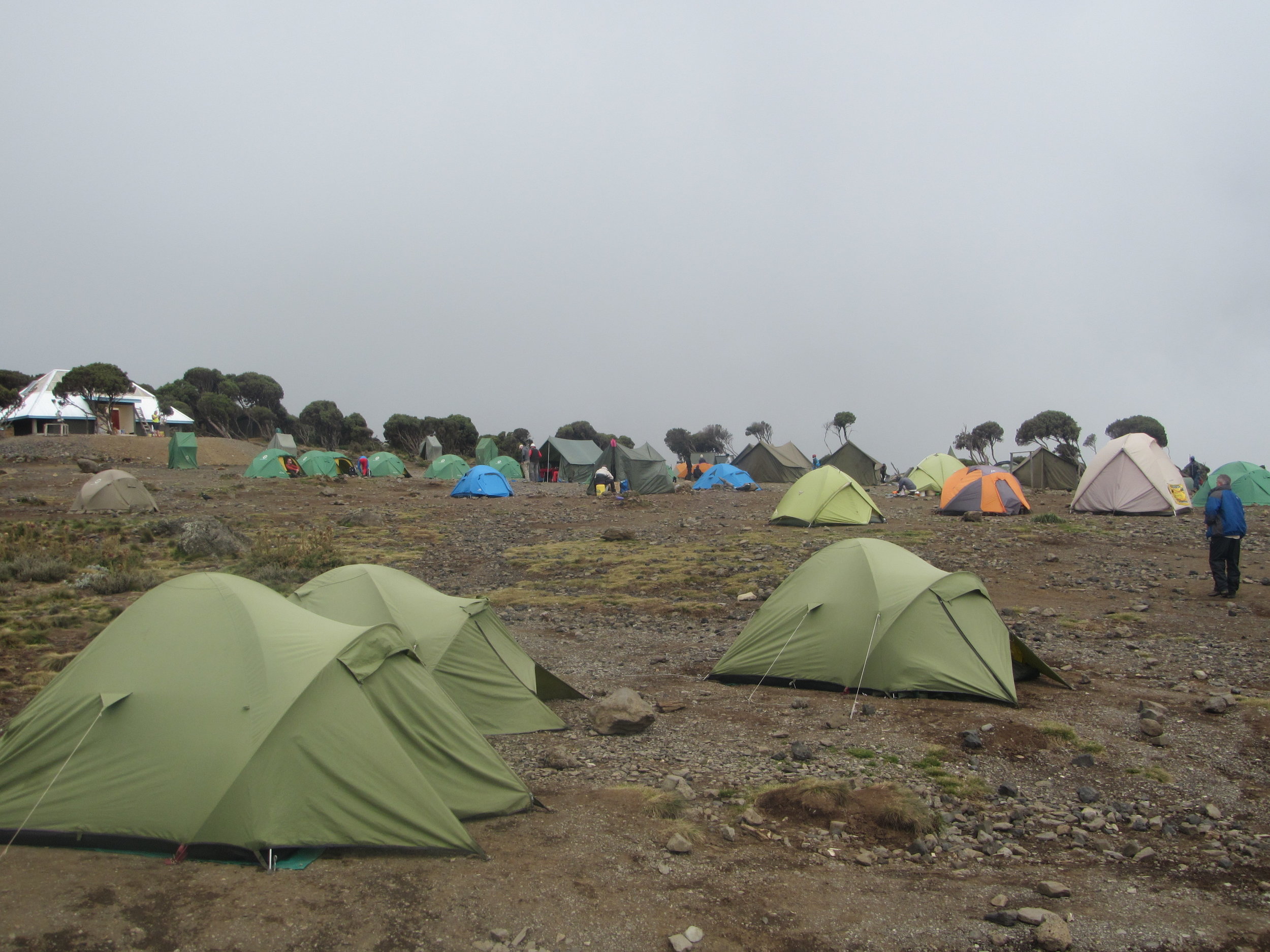
Here are a few tips to help with your mental toughness:
- Bring letters from people who are cheering you on from home. Read at least one everyday.
- Visualize how it will feel when you reach the summit. How you’ll feel, what it will be like, will you cry?
- Bring a memento from home that has gone with you on other adventures. Make sure it’s easy to carry, you don’t need to add more weight to your pack.
Tips for Kilimanjaro: It’s all about the Snacks
Don’t get me wrong, on the mountain you will be fed well. The cooks work really hard to make sure everyone has plenty to eat. However, at altitude you may lose your appetite. I always do. Sometimes I can’t even be in the presence of food because the smell upsets my stomach. Or at mealtime, I’m just not hungry.
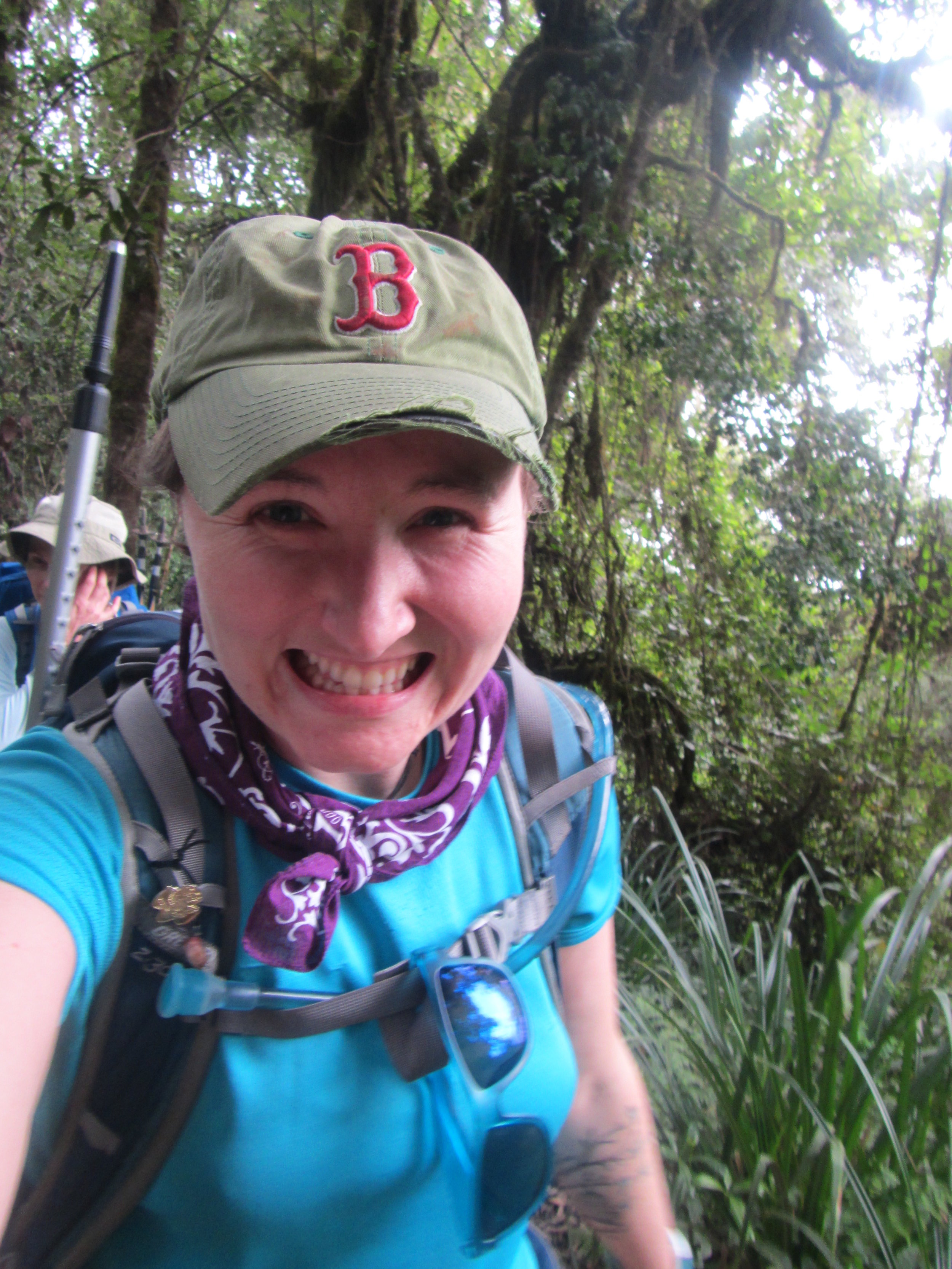
Even if you don’t want to eat, in order to make the summit you NEED to consume something. This is where your snacks come in. Of all the tips for Kilimanjaro on this list remember if you don’t eat you’re not going to summit.
On Mount Kilimanjaro no one is on a diet. Everything you bring with you for snacks should be things you love. Food that you crave. If the food you enjoy has protein in it, even better. Don’t make the mistake of bringing heavy bars (clif bars, protein bars, etc.) you won’t eat them and they’ll just sit in your day pack taking up space and adding weight.
A few of my favorites are:
- Cheez Its
- Beef Jerky
- M&M’s
- Hershey Bars
- Fruit Leather
- Bouillon Cubes
Tip #6 for rocking Mount Kilimanjaro: Stay Hydrated
A smart women once told me that hydration is happiness and I’ve been saying it ever since. This is even more important when hiking at altitude.
Your body dehydrates much quicker at altitude and can have several side effects. When you’re dehydrated on Mount Kilimanjaro (or any mountain) it can cause grouchiness, fatigue, increased chance of headache, and Acute Mountain Sickness (AMS).
On Kilimanjaro water is only distributed while at camp in the mornings and evenings. Each morning it’s important to get as much water as you can carry. When I’m hiking at high altitudes I carry my 2 liter Platypus water bladder and a Nalgene totaling 3 liters. It is my goal every day to drink at least that much water.
To help with hydration, I usually add a Nuun electrolyte tablet to the Nalgene bottle. I would not recommend adding them to all the water you’re carrying because having 2 drinking options will encourage you to drink more. Plus, I’ve gotten sick of drinking the water with electrolytes and have stopped drinking, which is never good.
Tips for Kilimanjaro: Pole, Pole!
On Mount Kilimanjaro slow and steady reaches the summit. You’ll hear from your amazing guides, “Pole, Pole,” which means slowly, slowly in Swahili. Hiking over the course of 6-8 days on a challenging mountain like Kili is a marathon not a sprint. It doesn’t matter who gets to camp first or last each day. It only matters that you make it to camp.
With the low levels of oxygen at altitude, you should always be walking at a pace in which you can carry out a conversation. If you find that you are having difficulty catching your breath simply slow your pace. Your guides will be there to let you know if you need to stop for a break or need any assistance. They’re great at helping to set a pace that will work for you. Let them know if you need to slow down, the guides want you to have the best experience possible.
What are some of your tips for Kilimanjaro? Let me know in the comments!
Love it? Pin it!

